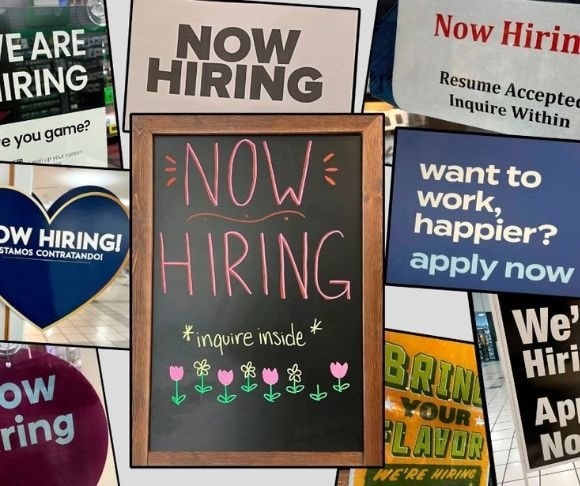The cost-of-living crisis is manufacturing quite the post-pandemic economy. In addition to most Americans living paycheck to paycheck and many households turning to debt to stay alive, a growing number of individuals are looking for extra work to keep their heads above water. With this trend becoming the new normal, is the US labor market really as vibrant and robust as everyone is saying? Remember when White House Press Secretary Karine Jean-Pierre said the White House had created “ten-thousand million jobs”? If people are working 100 jobs just to cope, it must not be a great economy.
Need Extra Work
 Nearly 70% of Americans are searching for extra work to fight inflation, according to a new Bluecrew survey of full-time, part-time, and unemployed workers. The poll discovered that many of the study participants are already clocking in 40 hours during the workweek, choosing to add some more shifts, or performing gig jobs on evenings and weekends. Other survey respondents are seeking out opportunities elsewhere. Optimism is waning, too, as 65% revealed they plan to look for new opportunities in 2023 to endure rising inflation.
Nearly 70% of Americans are searching for extra work to fight inflation, according to a new Bluecrew survey of full-time, part-time, and unemployed workers. The poll discovered that many of the study participants are already clocking in 40 hours during the workweek, choosing to add some more shifts, or performing gig jobs on evenings and weekends. Other survey respondents are seeking out opportunities elsewhere. Optimism is waning, too, as 65% revealed they plan to look for new opportunities in 2023 to endure rising inflation.
This latest trend all has to do with rampant price inflation, which sits north of 8%. The study found that 85% note the cost of living has altered their recent spending habits, while 72% reported that inflation had changed the way they view their work.
The numbers are not surprising. As Liberty Nation reported, approximately 7.7 million Americans are working two or more jobs, and a considerable portion of the job creation this year has resulted from double counting. The labor force participation rate (LFPR) has also climbed as more people returned to the workforce in response to out-of-control inflation. Despite significant wage gains over the last 18 months, the real wage rate (inflation-adjusted) resides below –4%. Other studies have found that even wage hikes are insufficient to stay ahead of inflation.
With all these facts and developments, how can this be a healthy labor market?
Still, regardless of how the numbers are crunched or what the data show, millions of Americans are struggling to afford basic necessities, be it rent or food. As shelter costs have increased 6.2% from a year ago and grocery store prices have spiked nearly 14% from 2021, consumers are taking drastic action. This includes using credit cards, tapping into their savings, investing or saving less, or taking advantage of buy-now-pay-later (BNPL) services.
What About the Federal Reserve?

(Photo by: Don and Melinda Crawford/UCG/Universal Images Group via Getty Images)
Now that the Federal Reserve is on a tightening campaign, the central bank is essentially trying to induce a recession to lower the consumer price index (CPI) or the personal consumption expenditure (PCE) price index – its favorite inflation gauge. The central bank’s focus, it seems, is to create higher unemployment, wreaking havoc on millions of employed Americans. Unfortunately, holding onto a job could become the new chief concern for workers in 2023 or 2024. So, not only is it becoming evident that dousing red-hot inflation may take longer than expected, many individuals could be at risk of receiving pink slips. Of course, this is in addition to skyrocketing borrowing costs.
A Hard Knock Economy
Is this an abnormal economy? The United States has created (or returned!) about ten million jobs so far this year, wage gains have been through the roof, there are more than ten million employment opportunities, four million folks are quitting each month, and consumer confidence is improving. And yet, inflation is still at a four-decade high, the country is in the middle of a recession, asset bubbles are popping, and private debt levels are at record highs. What is going on here? Perhaps it is the classic quote from author Robert Nathan: “Where I come from. Nobody knows; And where I’m going. Everything goes. The wind blows, The sea flows – And nobody knows.”




